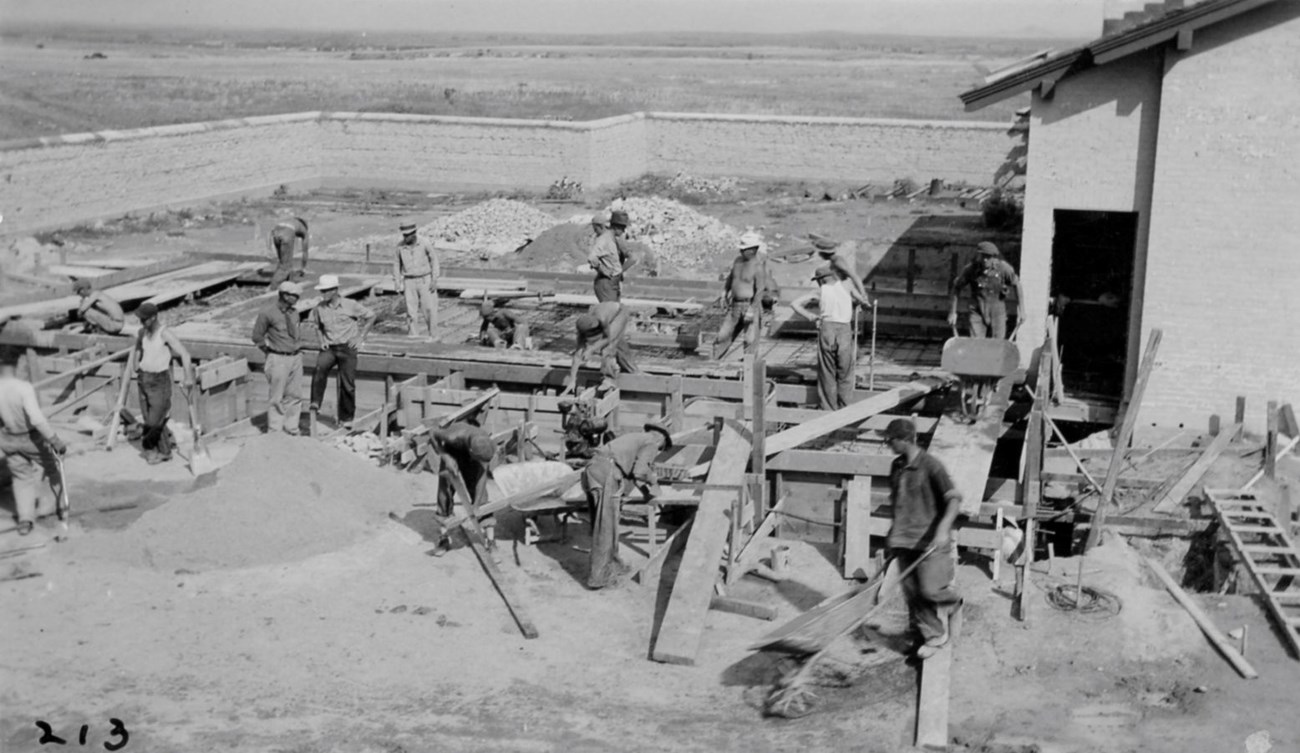Last updated: February 15, 2025
Article
New Deal Programs at Scotts Bluff National Monument

NPS
Putting Men Back to Work
After Franklin D. Roosevelt took office in 1933, he summoned up the vast resources of the nation to combat the grip of depression in the country. Three public relief agencies created by the president helped build Scotts Bluff National Monument: the Civil Works Administration (CWA), the Public Works Administration (PWA) and the Civilian Conservation Corps (CCC). These programs created a double benefit, they brought young men back to work and helped to protect America’s natural resources in state and national parks. FDR introduced the idea for these programs with his first inaugural address on March 21, 1933. He stated, “The propose for me to create a Civilian Conservation Corps to be used in simple work, not interfering with normal employment, and confining itself to forestry, the prevention of soil erosion, flood control, and similar projects. I call your attention to the fact that this type of work is of definite practical value, not only through the prevention of great financial loss but also a means of creating future national wealth”.The CCC
The official program was opened to men 18 to 25 years of age. WWI verterans or older skilled workers were hired to train and protect the unskilled workers. The workers would enlist, get a physical and be transported to an Army training camp for five days of basic training. The term of enlistment was six months and could be renewed three times for a total of two years. They were paid $30 a month; of that, $25 was sent home to their family. The men worked five days a week with a daily routine of reveille at 4:30 am to lights out at 8:30 pm. There were approximately 1,643 CCC camps working each year, with a total of 4,500 camps built overall. Locally, there were camps at Scotts Bluff, Mitchell, Lake Minatare and the Wildcat Hills. In April 1935, the CCC moved 213 men into camp #762 built in the “badlands” area of the Monument. The CCC continued to work on projects until CCC camp was abandoned on May 31, 1938, and obliterated in April 1939. Read more about the National Park Service and the CCC.The Local Legacy of the New Deal Programs
If you've ever driven the Scotts Bluff Summit Road, you have seen first hand the enduring work of two New Deal programs: the CWA and the CCC. On November 24, 1933, the CWA began construction of the summit road. The road was first referred to as the “Pass-to-Summit” highway. After the excavation of the third tunnel, all excess rock and dirt was removed from the summit road and grading and filling operations were completed so paving could begin. The concrete road was made 18 inches thick with a “buzz strip” in place of a center line. The summit road was completed and officially opened on September 19, 1937, at a cost of $200,265. A reported 550 cars used the road on the first day.The first building at Scotts Bluff was the one room Oregon Trail Museum. The Visitor Center was dedicated on July 16, 1936. In 1937 the CCC added two rooms, offices and a comfort station using adobe bricks as the primary building material.
Other projects the CCC were involved in at Scotts Bluff National Monument were: new picnic grounds south of Mitchell Pass, a 3-room residence, maintenance buildings, the Saddle Rock Trail and foot tunnel, water system, various roads, planting over 600 trees, erosion control and collecting fossils and prehistoric remains. They also worked on the reconstruction of the graveled Highway 86 (later Highway 92 and today the Old Oregon Trail).
